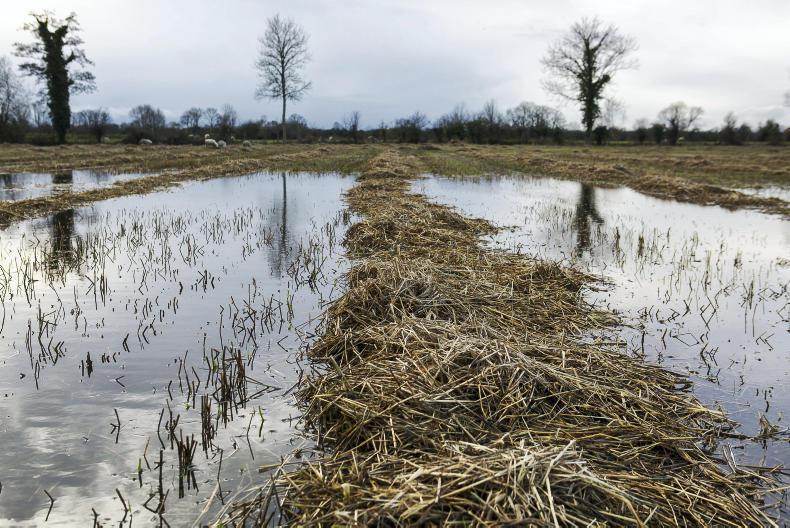Winter rainfall in Ireland could increase by as much as 14% by 2060, experts have said.
The Department of Agriculture on Thursday launched a public consultation on the Draft Agriculture, Forest and Seafood Climate Change Sectoral Adaptation Plan.
It highlighted a projected increase in winter rainfall of between 0-14% for the high-emissions scenario in Ireland for the years 2041 to 2060.
Annual rainfall
Met Éireann analysis of annual rainfall totals has shown that the average annual rainfall rose by 60mm or 5% in the 1981-2010 period, compared to the 1961-1990 period.
The same study showed an increase in the frequency of wet (>10mm) and very wet (>20mm) days over 1961-2010.
The average forecast from the ENSEMBLES project, based on 12 climate simulations, is for an increase in the late autumn (November) rainfall over Ireland of about 8% in 2021-2050.
This would rise to about 15% in 2071-2100, the project forecast.
Both figures are relative to the 1961-1990 climate period.
What effect will this have on farms?
Higher rainfall in winter could result in difficulties for farmers who must comply with the EU Nitrates Directive regarding slurry storage and land spreading, the Department has warned.
It has also said that slurry storage will have to be reassessed for capacity to cope with extreme weather events like flooding and drought.
It also warned of further risks such as:
Decreased trafficability by machinery and increased poaching, especially on wet soils.Floods, soil compaction and erosion.Pesticide run-off could lead to increased pesticide exceedances in drinking water, particularly for highly soluble grassland herbicides or late-season crops in wet conditions. Read more
Slurry storage review planned by Department for extreme weather
Live animal exports to Europe are banned during the heatwave
Factories fight moves on price transparency
Winter rainfall in Ireland could increase by as much as 14% by 2060, experts have said.
The Department of Agriculture on Thursday launched a public consultation on the Draft Agriculture, Forest and Seafood Climate Change Sectoral Adaptation Plan.
It highlighted a projected increase in winter rainfall of between 0-14% for the high-emissions scenario in Ireland for the years 2041 to 2060.
Annual rainfall
Met Éireann analysis of annual rainfall totals has shown that the average annual rainfall rose by 60mm or 5% in the 1981-2010 period, compared to the 1961-1990 period.
The same study showed an increase in the frequency of wet (>10mm) and very wet (>20mm) days over 1961-2010.
The average forecast from the ENSEMBLES project, based on 12 climate simulations, is for an increase in the late autumn (November) rainfall over Ireland of about 8% in 2021-2050.
This would rise to about 15% in 2071-2100, the project forecast.
Both figures are relative to the 1961-1990 climate period.
What effect will this have on farms?
Higher rainfall in winter could result in difficulties for farmers who must comply with the EU Nitrates Directive regarding slurry storage and land spreading, the Department has warned.
It has also said that slurry storage will have to be reassessed for capacity to cope with extreme weather events like flooding and drought.
It also warned of further risks such as:
Decreased trafficability by machinery and increased poaching, especially on wet soils.Floods, soil compaction and erosion.Pesticide run-off could lead to increased pesticide exceedances in drinking water, particularly for highly soluble grassland herbicides or late-season crops in wet conditions. Read more
Slurry storage review planned by Department for extreme weather
Live animal exports to Europe are banned during the heatwave
Factories fight moves on price transparency






 This is a subscriber-only article
This is a subscriber-only article









SHARING OPTIONS: